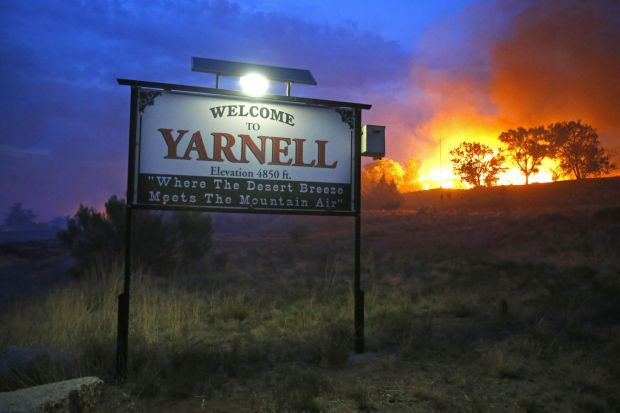PHOENIX — Saying state officials left them both unprotected and in the dark, residents of Yarnell on Monday asked the Court of Appeals to give them a chance to sue.
Attorney Craig Knapp said the state is liable for the loss of their homes because it undertook the chore of defending the community two years ago but was negligent in that performance. But Knapp, in new legal filings, said that's only the beginning of the errors.
He said the evidence shows the state knew within two days of its firefighting efforts that the community was "indefensible."
"The state, however, did not warn its residents about that the fact ... until 14 or 15 hours later," Knapp wrote in his court filings. "Instead, the state did not share its secret evaluation that Yarnell was indefensible" and did not provide an evacuation notice "until the fire was poised to devastate Yarnell."
But none of that will matter unless Knapp can convince the appellate court that the state had some duty to specifically protect Yarnell residents and their property, something he failed to prove to Maricopa County Superior Court Judge Richard Gama.
"The court finds that the state's undertaking was not a service rendered to plaintiffs," Gama wrote in his April ruling. Instead, he said, the state was doing what was in "the bests interest of the state, not persons who own property near state trust land."
Nor was Gama persuaded by the lack of an evacuation notice, saying there is no evidence of any law that would impose a pre-existing duty on the state to provide one.
The June 2013 lightning-caused fire eventually destroyed more than 120 homes.
It also resulted in the deaths of 19 firefighters who were members of the Granite Mountain Hotshots. A negligence claim by the families of 12 of the firefighters was settled in last month for $50,000 apiece and promises by the state of changes in the way it fights fires.
Knapp, in his filing, said there are sufficient facts to let his clients make their case to a jury that the state bears at least some responsibility for their losses and should be made to pay.
He said while the fire started small, the state did nothing to contain or suppress it. He said that Russ Shumate, the state's initial "attack commander," later concluded the first had "low spread potential" and "just let it grow unchecked in a dry, windy, fuel-filled area with extreme fire potential and a high fire-spread potential."
Knapp said other mistakes were made the following day, including assigning just 13 firefighters to contain the blaze.
Finally, early in the morning of the third day, a structure-protection group supervisor concluded the homes were not defensible.
"He then did nothing useful to protect Yarnell and its residents," Knapp wrote. "The state, however, never warned Yarnell's resident that their homes were indefensible."
What finally happened, Knapp said, is the fire reached the edge of the community the afternoon of the third day, "with no firebreaks, backfires, burnouts, bulldozed clear area, firefighters, firefighting equipment, or effective aerial-retardant and water drops to prevent the fire's unopposed entry into the defenseless town."





